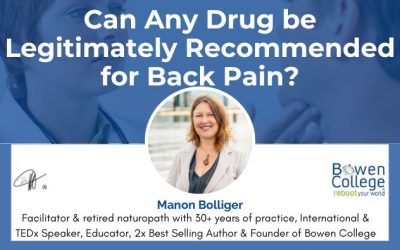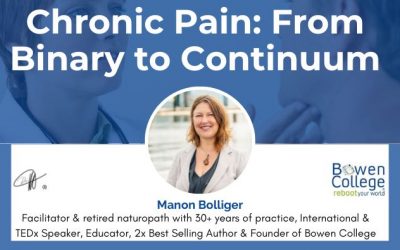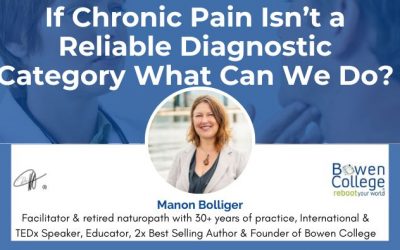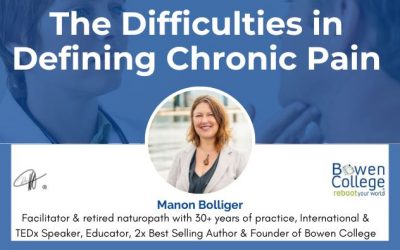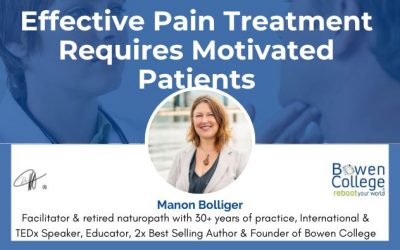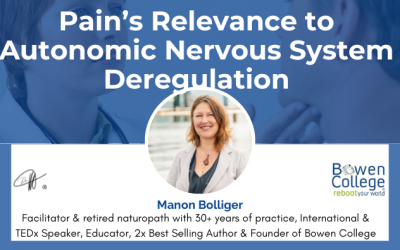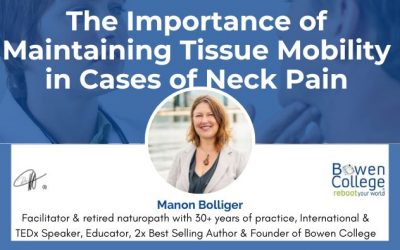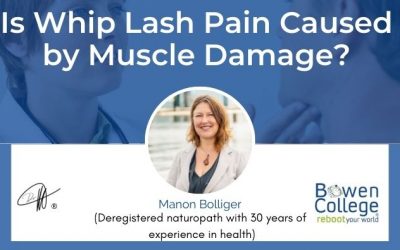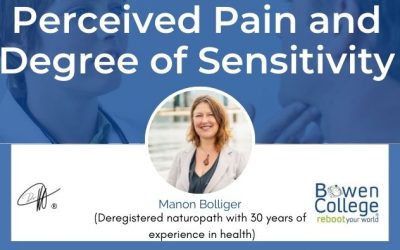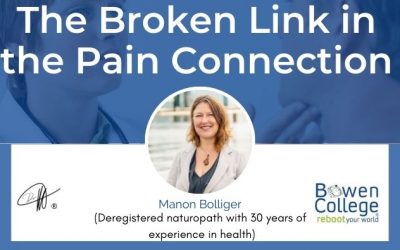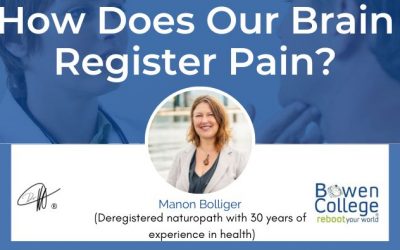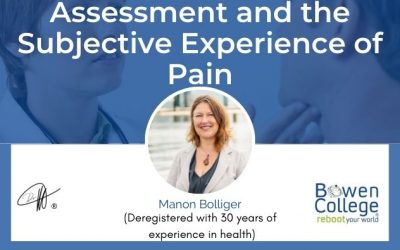News from the Bowen College community
Bowen College is committed to patient-centered, pain-free care. Read news from our community.

Subscribe to the Bowen College blog to read the latest updates for holistic, patient-centered care
Time to Re-evaluate the Doctor’s Role
‘‘If a feeling becomes strong enough, it might become an image. This image can be of help for the mind.’’ (T.S. Elliot) As a doctor, what extent of responsibility do you have in assessing your patients’ situation and exploring possible “prescriptions”? How much of the...
Plan: Beyond Glorified Coping Skills and the Placebo Effect
“Medicine tells us as much about the meaningful performance of healing, suffering and dying as chemical analysis tells us about the aesthetic value of pottery,” Ivan Ilyich in Limits to Medicine. “We confine ourselves to a narrow realm indeed if we exclude from...
The Body is a Carrier of Meaning
While Steen and Haugli state that treatment programs do exist that approach chronic pain from a psychological point of view, promoting educational pain programs, as well as cognitive understanding of pain and pain models, in order for behaviors to be modified, has...
Some examples of the biopsychosocial approach to pain.
In the last couple posts we’ve explored the four dimensions of the biopsychosocial approach to pain. The upshot of the story is that tissue damage alone cannot reveal pain to us and in fact an approach is required that attends to a range of behavioural, psychological...
More on The Biopsychosocial Approach to Pain
In the last post, we started an introduction to the biopsychosocial approach to pain, seeing, in its first dimension, how there was no 1:1 relation between correlation between tissue damage and pain experience. The second dimension is pain perception: a...
The Biopsychosocial Approach to Pain
As psychoneuroimmunology has offered a conceptual and biological understanding of the mind-body connections the concept of pain has evolved from purely biomedical to a multi-dimensional understanding. Several authors have categorized management and treatment...
Can Any Drug be Legitimately Recommended for Back Pain?
A 2003 systematic review of antidepressant treatment for chronic back pain concluded they produce only moderate symptom reduction (Staiger et al., 2003). Another recent review concluded that many drugs used for back pain are no more, or only slightly more, effective...
The Legacy of Animal Models for Chronic Pain
Animal models for chronic pain are insufficient, despite pioneering work in the late ‘70s to mid-80s. These models have at least confirmed that chronic pain states are biological entities and not just patients’ imagination. Also, they allow for a mechanistic study of...
Chronic Pain: From Binary to Continuum
In their research, Korff and colleagues have observed a continuum of chronic pain, with no distinct class of chronic pain patients. No clear demarcation distinguished persons with possible or probable chronic pain from those with less significant and enduring pain....
If Chronic Pain Isn’t a Reliable Diagnostic Category What Can We Do?
In the last post we raised the issue of defining chronic pain. One suggestion was to define it in terms of duration. Van Korff & Dunn, in Chronic Pain Reconsidered (2008), argue that “while conceptually appealing, this approach has not produced reliable or valid...
The Difficulties in Defining Chronic Pain
Patients seeking care for pain want to know whether it is likely to improve or run a chronic course, not just its cause and how it might be relieved and managed. But it is difficult for the doctor to give a clear and reassuring answer. Korff and Dunn, in their book,...
Effective Pain Treatment Requires Motivated Patients
In my last post we saw that, regardless of whether the Autonomic Nervous System (ANS) deregulation is activated by physical or psychological triggers, such activation may have significant effects on nociceptive transmission and subsequent pain experiences. This was...
Pain’s Relevance to Autonomic Nervous System Deregulation
As covered previously, the autonomic nervous system is comprised of both the parasympathetic and sympathetic nervous system. In chronic stress, the sympathetic system, through several hormonal and neural pathways, maintains a state of chronic stress. While...
The Importance of Maintaining Tissue Mobility in Cases of Neck Pain
We’ve seen over the last several posts that the standard explanations for pain related to whip last, tending to identify it with lesions and their effects, is increasingly challenged in the research literature. Few insightful studies demonstrate successful...
Is Whip Lash Pain Caused by Muscle Damage?
In the last couple posts we’ve seen how mechanical and structural explanations for persistent whip lash pain don’t stand up as well as does subjective and emotional explanations. It turns out than even muscular explanations are not as compelling as many might assume...
Solid Matter Is Not Fixed, But Mobility Is?
I will never forget the patient I saw in Stouffville, Ontario, who was told by her chiropractor that the pain and lack of motion in her neck had to do with the osteophytes that had amassed on her cervical spine. After two series of 30 treatments, she came to see me...
Perceived Pain and Degree of Sensitivity
In my most recent posts I considered the brain science on pain and how it indicates that a patient’s perception and experience of pain cannot necessarily be reduced to assessment of specific lesion events or their presumed effects. Let’s get into this a little more...
The Broken Link in the Pain Connection
In my last post we looked at the brain science on pain. Among the facts we observed was that there were two distinct pathways associated with pain. I have a couple more thoughts to add on the brain science front before we turn to a consideration of what this means for...
How Does Our Brain Register Pain?
The pathways for pain transmission are complex. Generally, nociceptive information (pain-info) reports external and internal representation of the body’s physiological condition through two different components: The sensory-discriminative component, transmitted...
What is Pain Anyway?
In the current series of posts I’ll be discussing the treatment of pain and how this creates difficulties for effective assessment, using the SOAP method for doctors’ diagnosis. It seems though that before becoming fully immersed in these discussions, it would be...
Treating Pain with BowenFirst™
I have successfully treated patients using BowenFirst™ for frozen shoulders, sciatica, migraines, low back pain, whiplash, TMJ and fibromyalgia, as well as for generalized aches and pains with their various reasons and likely “explanation” as in osteoarthritis years...
How I Treat Pain
In my last post I discussed the difficulties pain posed for effective assessment, given its subjective character, and how addressing pain first was the prime directive in my practice. Perhaps the most effective way of addressing the multifactorial,...
Assessment and the Subjective Experience of Pain
Continuing with our discussion of the role of assessment in the doctor’s SOAP interview, I want to return to a topic discussed before: the character of pain. Pain is a good example of the conundrum doctors’ face with regard to “assessment.” The experience of pain is...
My Story with MS: Final Thoughts
The last month or so I’ve been telling you about my journey with MS. When I compare my results, and those of patients who have done well managing their MS, with those who have had a harder time, I see one important difference. Those who did not do well kept getting...







